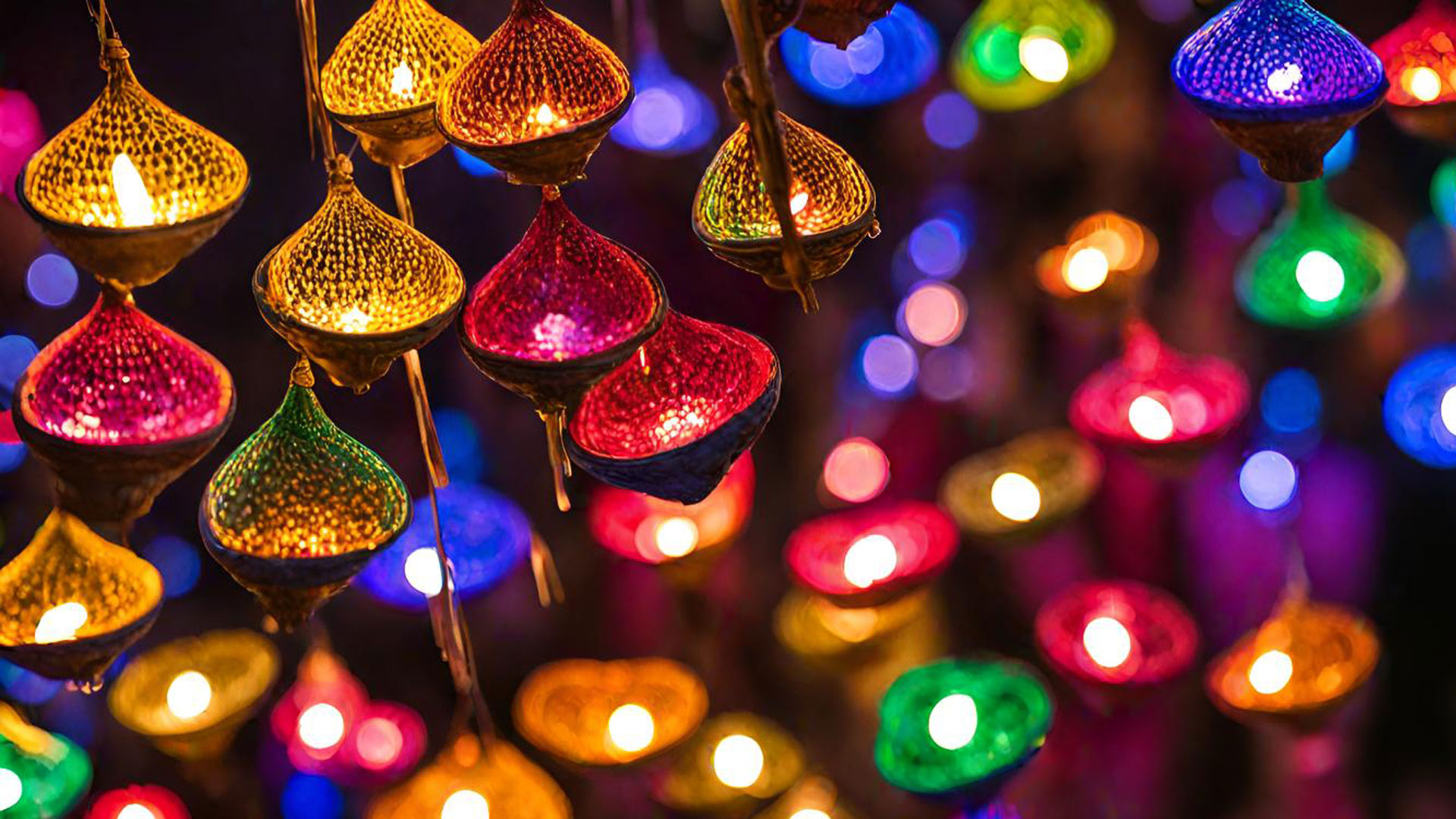A nation's lasting love
Light isn’t just about the illumination of the world around us, it’s a part of the story we live. It plays an essential role in the human experience and has the power to evoke profound emotion, shape our perception and forge deep connections.
The realm of light and lighting design extends far beyond functionality, aesthetics, and mood; it is intricately interwoven into cultures and societies, and it is these contextual elements that can often define a space. India is a nation that clearly reflects its vast landscape and colourful lifestyle through its use of light, with the country paying homage to this entity in a way like no other.

Behaviourally speaking
There is the small daily ritual observed by many Indian’s where a ‘diya’, a small oil lamp, is lit with the rising sun, in order to dispel darkness and welcome the light. A Surya Namaskar, also known as a sun salutation often follows and is performed at the break of dawn to pay tribute to the sun.
On a grander scale, national festivals and traditions prominently feature light as a central component. Take Diwali for example, the word derives from the Sanskrit word ‘deepavali’, meaning rows of lighted lamps – the ‘Festival of Lights’ is one of the biggest celebrations in the Indian calendar and signifies the true importance of light in its culture. The holiday literally celebrates the victory of light over darkness, which represents the triumph of good over evil, and knowledge over ignorance.
To celebrate, people place lamps outside their homes to welcome light and protect them from spiritual darkness. Diwali also involves setting off fireworks and decorating homes with colourful ‘rangoli’ designs, which symbolise positivity and reflect the nation’s love of colourful lights and brightly lit environments.
Through observing these festivals we can see the immersion of light in the Indian culture, and if we look back through history we can see instances of its early importance to India’s people.
Architecturally speaking
Sunlight was an entity that was worshipped in ancient temples. Evidence has been found of temples dedicated solely to the worship of sunlight, where buildings were architecturally designed to track the celestial movement of the sun in order to tell time and to aid in the celebration of the sun, the ‘sustainer of all life on earth’.
To this day, temples throughout India still stand as a testament to the divine connection between architecture, light and human beings, they set the stage for a deep and ultimate connection with light.
The fact that India is situated in a tropical region means that it has always been prone to excessive sunlight throughout the day, and so architectural preferences have always intended for natural light to be prominent in the home and in communal buildings. And now artificial lighting is designed to be an extension of this – it needs to be bright and fulfilling, furthering this ancient love for light.
Indians love to light every corner of their home in order to celebrate the space. In the context of large families living in close quarters, every nook and cranny of space is utilised, making effective illumination both a necessity and a hallmark of good design. Designers often take inspiration from daylight and aim to capture its ephemeral quality to generate symbolism and give significance to the space.

Culturally speaking
In a country where traditions and culture are intertwined with light, it endures as the emotional thread that binds the nation together. It deeply resonates with Indian lifestyle, through its rich diversity of food, culture, and clothing. It undoubtedly influences the subconscious, inspiring outward displays when it comes to lighting decisions – our colourful choices reflect our colourful lifestyle.
Having lived in a number of countries, and through observing and researching light and lighting design, it is clear to me that light takes on unique expressions for individuals and communities alike. But for me, and for India, lighting design is not just about functionality, aesthetics, or mood, it is deeply rooted in culture, traditions, climate, and context.
I believe that light and lighting design merge to create a layered means of expression. It transcends space and is intertwined with thoughts, feelings and memories. Knowingly or unknowingly, light is an eternal part of life. It comes in a myriad of forms and weaves into the fabric of our existence, it’s a constant companion. Light is a form of energy and the people of India are devoted to it. It isn’t purely about illumination, it’s entangled in the story we live.


